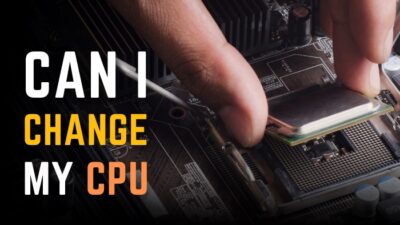To transport your CPU more safely, you must wrap it properly or fit it in an indestructible shield. As the processor or CPU is the brain of the computer, it is the most fragile component of your pc.
Improper handling, humidity, or insufficient cushioning material can hamper your CPU while shipping. 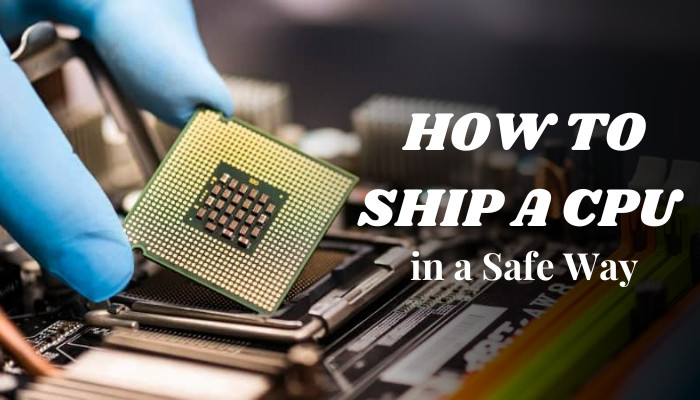 Depending on the possible safety options and research on the previous damage cases, I will discuss the best ways to ship your CPU.
Depending on the possible safety options and research on the previous damage cases, I will discuss the best ways to ship your CPU.
What Packaging Materials Do I Need for Shipping CPU?
There are some particular elements and practical ways to pack your computer processor properly. You can find many aspects in the market with which you can plan to ensure your CPU’s safety.
Anti-static plastic, styrofoam, CPU clamshell, and other things are used to wrap or put the CPU for shipping in different places.
Here are the options that you can work with to ensure your processor’s safety:
1. Use Bubble Wrap
Bubble wrap is a special plastic packaging with little bubbles, ensuring safety from sudden smashes. If you only use a bubble wrap packet for shipping purposes, you may end up damaging it. It is always better to use other safety materials such as antistatic plastic, clamshell, or aluminum foil before bubble warps.
2. Buy a CPU Clamshell (CPU packaging box)
There are also CPU clamshells in the market. It is a kind of hard plastic cover for your CPU chip. You can easily fit your chip in the clamshell to keep it safe from sudden clashes. You can also use it and the bubble package to ensure the safety of transferring the processor.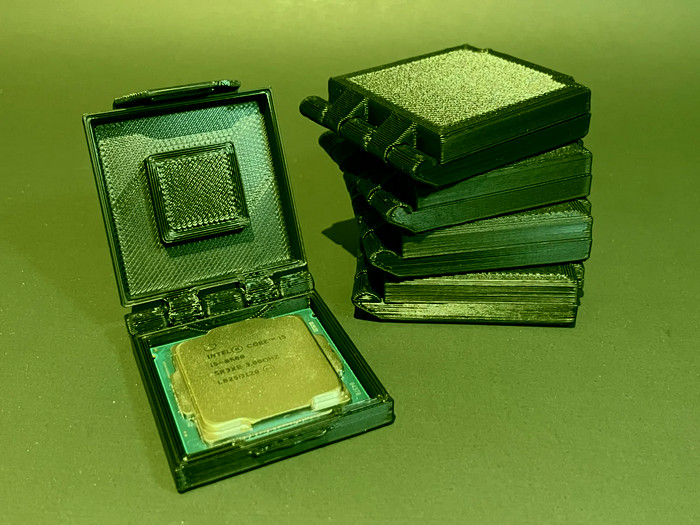
3. Prepare Cardboard
You have to shape the cardboard in the shape of your processor to ensure no space for friction, and you can also use tape and cushioning to fill up the gaps.
4. Wrap with Anti-static plastic
Anti-static plastics avoid static charges to protect the CPU from electronic discharge (ESD). Components like the CPU are susceptible to materials that can be electrically affected. To ensure reliable handling, you must use anti-static plastic.
5. Cover with Aluminum foil
Covering up the chip with aluminum foil will control the temperature. You can cut the aluminum foil as much as needed to cover the whole CPU, put it into the bubble wrap, and then into the packaging box or cardboard shell. And you are ready to ship your valuable part safely.
6. Shape Styrofoam
Styrofoam is a semi-hard material that has air trapped in it. You can shape the styrofoam as you like, so shape it to fit the CPU covered with anti-static plastic or aluminum and fit the processor into it to save it from any damage.
The correct combination of these materials ensures the safety of any computer component transport.
How do I protect my CPU While Shipping?
Prepare a box or make a space on the foam; now, wrap your CPU with anti-static plastic to put it in that space. You can also use aluminum foil on the anti-static plastic to control the temperature.
Instead of styrofoam, you can use bubble wrap or bubble wrap on the styrofoam to put it in a packaging box. In the case of PGA, you should use a CPU clam shell to ensure the ultimate protection.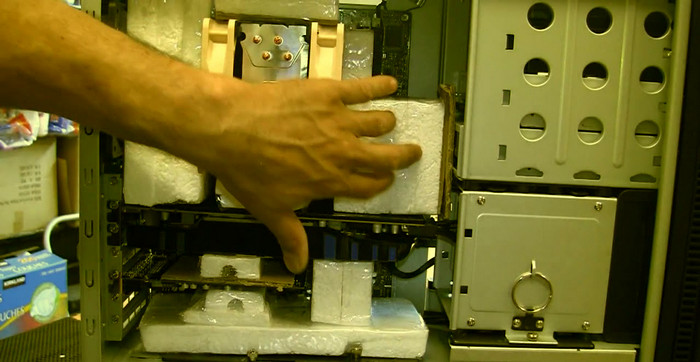 There are other things to put your concerns on, which I will explain in the following section.
There are other things to put your concerns on, which I will explain in the following section.
Here is how you can protect your CPU while shipping:
1. Correct Box size
The box’s space can define in what condition your processor will arrive at the destination. Ensure the correct measurements for the chip’s space. You should also not choose a big box with a huge margin. To decrease the movements, choose the right size for the parcel box.
2. Wrap Every Item
To ensure the safety of every component in your PC, you should unwind as many as possible. You also should select perfect-sized boxes for different parts of your PC.
3. Fill the Gaps in the Box
Frequent gaps in the box can increase the chances of friction. If you want to fill those gaps up, you can generally use cotton or paper, so that the chances of clashing can reduce.
4. Use Shock/tilt/Impact Indicators
Using shock indicators indicates where the shock may have happened along the way and it also concerns the delivery company to be more careful.
5. Research Previous Damage Cases
It is always better to research previous damage cases in order to know the possible causes. If you know what kind of damage can happen you can also find a solution for the issue. Researching will provide you with safer ideas to ship your CPU.
6. Run a Few Trials
In case you are working with a new shipping guy, you can check or take a review from someone you delivered the product to. After several trials, you can be sure if the service provided by the shipping company is qualitative or not.
7. Lable the Boix as Fragile
As the CPU is a fragile part, you should label the box with a fragile seal. Boxes with this seal are handled more carefully. Make sure you do not miss putting the seal on the box, or they may not put enough concern on the parcel.
Safety Precautions for AMD Processors (PGA)
AMD processors based on PGA (Pin Grid Array) sockets have pins arranged in a regular array on the underside of the body, which can easily be damaged or bent. You can make extra room in the carriage box and ensure the placement of safety materials on the side of the pins.
You can gently put an anti-static plastic on the processor and place it into a styrofoam so there can be zero movements. You also have to ensure the side with pins is not pressurized into the styrofoam by putting extra space, but not much.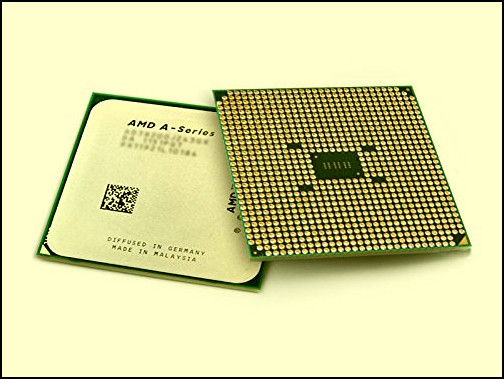 This way, you can safely transfer your AMD processor with a PGA socket.
This way, you can safely transfer your AMD processor with a PGA socket.
What are the Causes of Shipping Damages for CPU?
The processor is a complex component that can be defective depending on many facts. Generally, carriers are the main reason for facing such damage, but it can also depend on how it was packed.
Sometimes while packaging, there could be too much gap between the component and the package, which can create friction and bump in the box. This can occur as transit loss. There are other reasons to be concerned about, which are described below.
Here are the facts you need to ensure avoiding while shipping CPU:
1. Not enough cushioning material
If you do not put enough cushioning material inside the box you are shipping, you create space inside it. Frequent spaces in the box can create friction and damage the CPU chip.
2. Improper Handling
It is crucial to know how to handle CPU chips while packaging. Safer handling decreases the chances of being damaged. You should also keep in mind that this package will be handed over to several hands to be delivered.
3. Water and Humidity Damage
Improper temperature or getting in touch with water can be a major issue while shipping a processor. As the CPU is very sensitive, a high amount of water vapor in the air can also damage the chip.
FAQs
How to package a CPU without a box?
You can generally wrap the CPU with anti-static plastic and put it into bubble wrap > seal it well with tape and it is ready to go. Make sure the bubble wrap is in a perfect size.
How to transfer a CPU in an envelope?
Get an envelope that has bubble wrap inside, and put the CPU (with the anti-static plastic or aluminum foil wrapped around it and placed safely into styrofoam) in the envelope. Now you can safely transport your processor.
How to carry a CPU in the luggage?
You should place your CPU in a clamshell and then wrap it with anti-static plastic to place it safely into the styrofoam >Tape it well > Now wrap the styrofoam with aluminum foil so that it can be moisture-proof > Make a gap in your luggage and make sure the place will not get hit directly if the luggage gets hit.
Final Thoughts
You should be concerned about the types of damage, safer packaging tactics, and packaging materials. If you have experience and researched how to ship your computer processor your CPU will be safe.
If you have got any other questions related to CPU shipping, please comment below.




